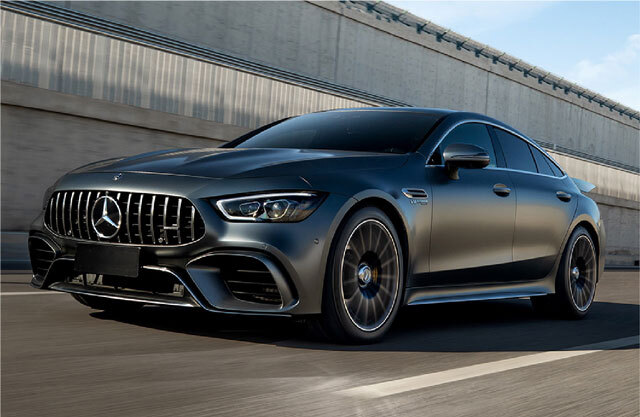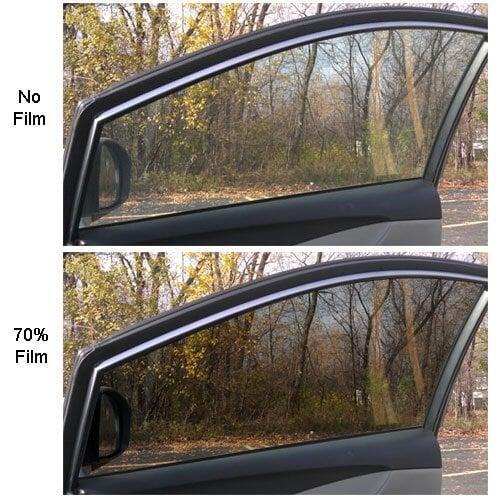When it comes to window tint percentages, drivers often ask: Is 70% tint worth it compared to no tint? While most people picture dark, privacy-heavy films, 70% tint is subtle, almost invisible, yet it still offers real benefits.
In this guide, we’ll compare 70% tint vs no tint, cover legal considerations, answer common Google FAQs, and show you why this “light” film might actually be the smart choice for your car.
What Does 70% Car Tint Mean?
♦ 70% tint allows 70% of visible light in, blocking about 30%.
♦ No tint (factory glass) usually lets in 85–90% of visible light.
This means 70% tint is very light, with just enough shading to reduce glare while keeping a natural, clear appearance. Want to learn more about different percentages? Check our guide on
tint percentages explained.
Appearance: Does 70% Car Tint Look Different?
♦ 70% Tint: Adds a faint, subtle shade to the glass, noticeable mainly in bright daylight.
♦ No Tint: Fully transparent factory look, with no added shading.
Side by side, the difference is subtle, but 70% film delivers benefits that no tint simply can’t.
Benefits of 70% Tint vs No Tint
Even though it looks nearly clear, 70% tint provides protection and comfort:
1. UV Protection – Blocks up to 99% of harmful rays, protecting your skin and preventing interior fading.
2. Heat Reduction – Quality 70% films cut infrared heat, keeping your cabin cooler.
3. Glare Reduction – Reduces glare from the sun and headlights at night.
4. Safety Layer – Adds a thin protective film that helps glass hold together if shattered.
5. Unchanged Visibility – Day or night, visibility remains almost the same as factory glass.
70% Tint vs No Tint: Quick Comparison
Feature | 70% Tint | No Tint |
Appearance | Subtle, faint shading | Clear, stock look |
UV Protection | High (up to 99%) | Very low |
Heat Rejection | Noticeable | None |
Glare Reduction | Moderate | None |
Legal Status | Often compliant | Always legal |
Privacy | Minimal | None |
Is 70% tint legal? The answer depends on your state. In many regions with strict regulations, including Texas, California, and New York, 70% tint is often allowed on front side windows because it maintains clear visibility for both drivers and law enforcement.
♦ 70% Tint: Commonly legal for front windows.
♦ No Tint: Always legal, but it provides no additional protection or benefits.
Myths and Facts About 70% Car Tint
When researching 70% tint, you’ll come across a lot of opinions online. Some are helpful, but many are misleading. Let’s clear up the most common myths.
Myth 1: 70% tint makes no difference
Fact: While it doesn’t dramatically change your car’s appearance, 70% tint still blocks harmful UV rays, reduces glare, and adds a protective layer to your glass. The benefits are more functional than cosmetic.
Myth 3: All tints fade or turn purple over time
Fact: Cheap dyed films may discolor, but high-quality ceramic and carbon tints are engineered to resist fading, peeling, and bubbling for 5–10 years or more.
Myth 4: 70% tint won’t help in hot climates
Fact: Modern ceramic films with a 70% rating can still block significant infrared heat, lowering cabin temperatures without making windows look darker. This is especially helpful in states with strong sun exposure.
Why UPPF Manta Window Film Is The Best Choice?
UPPF Manta Film is built with an exclusive PLATICOAT™ coating, adding an extra layer of defense against UV rays, discoloration, and everyday wear.
The Manta Window Film collection comes in three tint levels to suit different preferences and state regulations:
♦ Manta 30: 30% window tint designed for maximum privacy and strong protection.
♦ Manta 50: 50% window tint that balances coverage, comfort, and visibility.
♦ Manta 70: 70% window tint for a clean, nearly transparent look - with all the benefits of advanced protection.
Who Should Choose 70% Car Tint?
70% tint is perfect if you:
♦ Live in a state with strict tint laws.
♦ Drive a lot at night and don’t want reduced visibility.
♦ Want protection without a darkened look.
♦ Care about UV safety and interior preservation.
On the other hand, if you want privacy or a dramatic aesthetic, you’ll need darker films like 35% or 20%.
The difference between 70% tint vs no tint may look minor, but it’s huge when it comes to comfort and protection. With UV blocking, reduced glare, and legal compliance in most states, 70% tint is a smart way to improve your driving experience while keeping your car’s look close to factory.
If you want darker shades for style or privacy, explore other percentages, but for a subtle, legal upgrade that works day and night, 70% tint is the winner.
FAQs People Ask About 70% Car Tint



